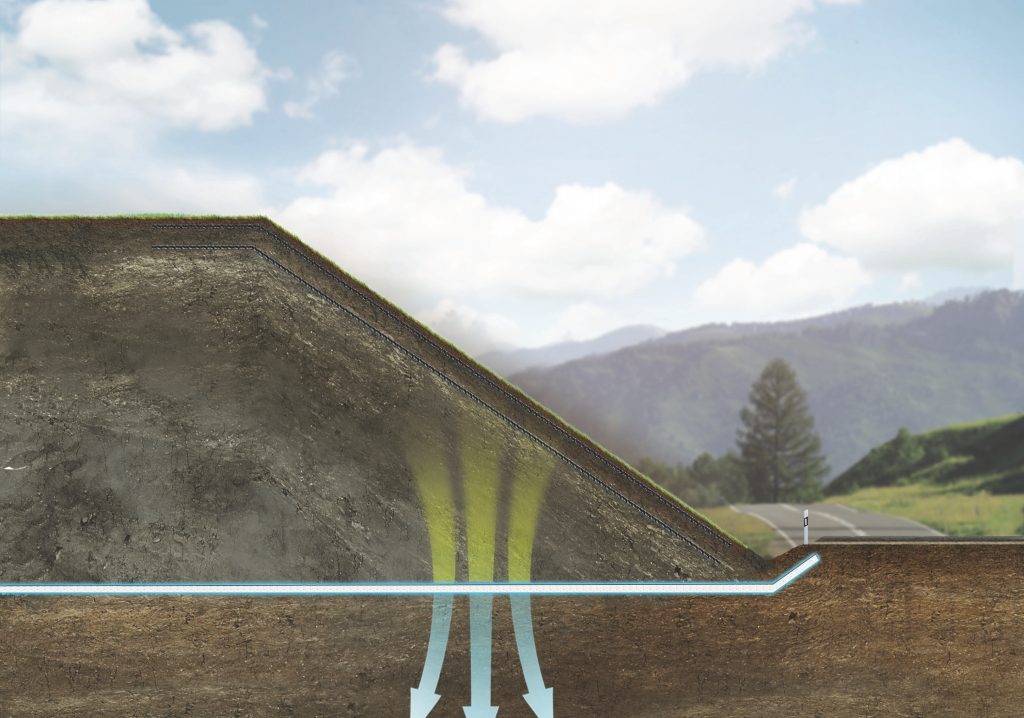Emerging contaminants such as PFAS are challenging traditional methods of containment. This presents the industry with an opportunity to innovate its practices and ensure containment solutions can keep up with future demands.
Evolving industry and environmental demands are pushing containment solutions into unchartered territory.
“Within our industry, we’re now seeing a lot more creation of emergent or persistent contaminants like PFAS [per and polyfluoroalkyl substances] and volatile organic compounds,” says Samir Sehnem, National Business Development Manager – Environmental & Hydraulic Engineering at HUESKER Australia.
“And it has been proven over the years by many studies that those contaminants can leak through our composite lining systems.”
For decades, containment solutions primarily relied on standard materials such as geomembranes and geosynthetic clay liners (GCLs), he says.
“However, there is still not enough data to prove that those materials can stop seepage of those contaminants to the underground water.”
As the nature of contaminants continues to evolve, and as environmental restrictions tighten, the containment industry needs to move beyond optimising traditional practices and start exploring entirely new solutions.
“We are looking into enhancing the materials that already exist,” says Sehnem. “But can we look outside of those materials? Are there other opportunities for the industry to develop? And are we doing everything that we are capable of to find a solution for these problems now, rather than postponing them?”
Approaching critical applications of geosynthetics
According to Siamak Paulson, Principal Geotechnical Engineer, Hexa Geo Environment Pty Ltd there has been a recent shift towards geosynthetics being used in the containment of potentially hazardous or toxic substances.
“We’re dealing with applications where we don’t necessarily have the same quality of liquid or solids, and [often], during time, as the materials are contained in that facility, they start reacting and generating hazardous material or substances,” he says.
The problems tend to lie in the long-term performance of these materials. Even when rigorous design processes are followed, the systems often degrade within 10 to 15 years as the substances they contain react and evolve.
This issue is not just theoretical – we are witnessing failures in containment systems which were once considered reliable in real time.
There have been some promising innovations in the use of geosynthetics for critical applications in recent years, particularly in the development of geocomposites designed to target specific contaminants.
However, despite their potential, these innovations have not yet gained widespread acceptance. Part of the reason for this is that the research and development behind them remains siloed within individual manufacturers, meaning that engineers and other stakeholders are often hesitant to adopt new solutions, says Paulson.
“[Engineers] always consider their risk profile… because the designer’s risk is always the highest. They’re the people who sign off on an application, and the long-term performance of that solution is still on the designer’s shoulders.”
To overcome trepidation to new containment solutions, he says engineers need to play a more active and collaborative role in research and development.
“Engineers should investigate the chemistry, the structural integrity – all the different elements that go into that [containment] system. If they come along on that journey as the manufacturers try to enhance the product, then that means engineers are also on board when we achieve a solution.”
And it’s not just engineers who need to be brought into these discussions – it’s also important that asset owners are engaged and informed about emerging innovations in order to understand their value and provide a commercial perspective.
A collaborative approach like this will also help foster shared accountability, says Sehnem.
“What’s happening now is, if something doesn’t go right, people start pointing fingers… Rather than everyone going, ’You know what, this didn’t work out. Let’s try and investigate the reason why, and then come up with a solution together,’” he says.
“We need to close that gap between all the parties involved. Of course, there are always going to be commercial interests. But regardless of that, the industry should be united rather than divided.”
The evolving landscape of containment
As the demands on the industry continue to evolve, ensuring safe and effective containment systems will mean moving from a reactive to a proactive approach to the complexities of containment.
The challenges presented by emerging contaminants are daunting, but also create exciting opportunities to rethink how the industry operates.
By integrating diverse expertise and focusing on long-term sustainability, the industry will be better able to adapt to the continuing evolution of containment needs and environmental challenges.
“There is still a lot to uncover and to discover,” says Sehnem. “It’s going to be an ongoing issue for many, many decades. But if we start this conversation as early as possible, and we start changing our approach and our minds, there are only positives to come.”
Want to learn more about the evolving use of geosynthetics in containment and the next steps for the industry? Register now for HUESKER’s upcoming webinar.

